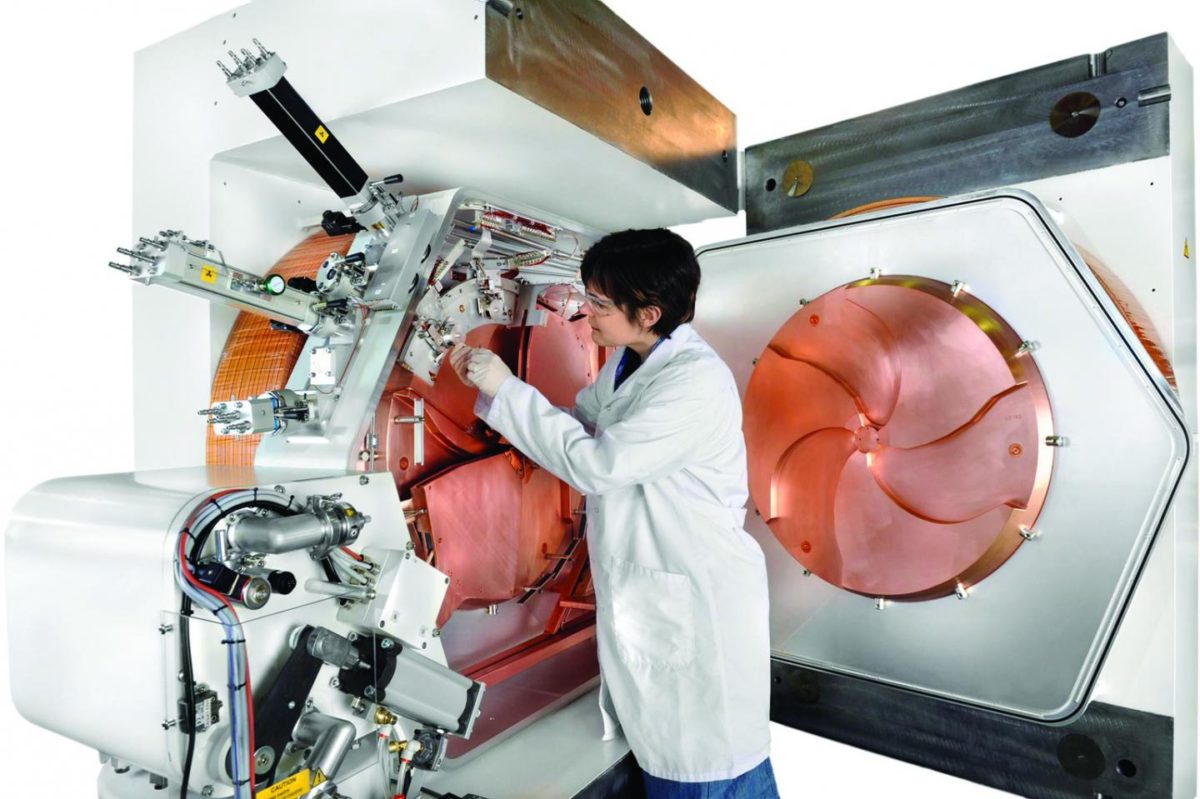
When it comes to the fascinating world of physics, there are countless inventions and discoveries that have revolutionized our understanding of the universe. One such innovation that has helped pave the way for groundbreaking research in particle physics is the cyclotron. The cyclotron, also known as a particle accelerator, is a remarkable device that has opened up new avenues of scientific exploration.
In this article, we will delve into 11 extraordinary facts about cyclotrons that will leave you in awe of their capabilities and significance. From their role in unraveling the mysteries of subatomic particles to their practical applications in medicine, cyclotrons have truly transformed the scientific landscape. So, get ready to embark on a journey through the world of cyclotrons and discover the immense impact they have had on the field of physics.
Key Takeaways:
- Cyclotrons, invented in 1932, accelerate particles using magnets and radio waves, aiding in medical imaging and cancer treatment while revolutionizing our understanding of nuclear structure and fundamental physics.
- Compact and versatile, cyclotrons drive scientific innovation, from exploring the universe’s mysteries to advancing medical technology, making them crucial in various fields of study.
Development of the Cyclotron
The cyclotron, a revolutionary particle accelerator, was invented by Ernest O. Lawrence in Its development marked a significant milestone in the field of nuclear physics.
Principle of Operation
The cyclotron operates on the principle of applying a strong magnetic field to accelerate charged particles in a circular path. This allows for the study of particle physics and the creation of high-energy particle beams.
High-Speed Particle Acceleration
Using powerful magnets and radio frequency waves, the cyclotron can accelerate particles to speeds close to the speed of light. This enables scientists to study fundamental particles and explore the mysteries of the universe.
Production of Radioactive Isotopes
One of the practical applications of cyclotrons is the production of radioactive isotopes used in medical imaging and cancer treatments. These isotopes are produced by bombarding stable atoms with high-energy particles.
Compact Size
Unlike other large-scale particle accelerators, cyclotrons are relatively compact in size. This makes them more accessible to research institutions and allows for localized experiments and applications.
Varied Particle Types
Cyclotrons are capable of accelerating various types of particles, including protons, deuterons, and alpha particles. This versatility makes them useful for a wide range of scientific experiments and applications.
Medical Imaging Advancements
The use of cyclotrons in medical imaging has revolutionized diagnostic techniques. Cyclotron-produced isotopes are utilized in positron emission tomography (PET) scans, providing detailed images of organs and abnormal cells.
Advancements in Cancer Treatment
Cyclotrons play a crucial role in cancer treatment through techniques like proton therapy. The precisely targeted proton beams generated by cyclotrons can be used to destroy cancer cells while minimizing damage to surrounding healthy tissue.
Exploration of Nuclear Structure
Cyclotrons have contributed significantly to our understanding of nuclear structure and the behavior of atomic nuclei. The ability to accelerate particles to high speeds allows scientists to explore the intricate nature of matter.
Fundamental Physics Research
By colliding particles at high energies, cyclotrons provide valuable insights into fundamental physics phenomena. They enable scientists to study particle interactions, search for new particles, and deepen our understanding of the universe.
Advancement of Science and Technology
The development and utilization of cyclotrons have paved the way for numerous scientific breakthroughs and technological advancements. From nuclear physics to medical applications, cyclotrons continue to drive innovation in various fields.
The 11 Extraordinary Facts About Cyclotron highlight the remarkable contributions and capabilities of this groundbreaking particle accelerator. From its development by Ernest O. Lawrence to its diverse applications in nuclear physics, medical imaging, and cancer treatment, cyclotrons have revolutionized our understanding of the universe and transformed the fields of science and technology.
Whether it is the production of radioactive isotopes for medical purposes or the exploration of nuclear structure, cyclotrons have played a central role in expanding our knowledge of the fundamental building blocks of the universe.
With their compact size, versatility, and ability to accelerate particles to high speeds, cyclotrons continue to push the boundaries of scientific research. As technology advances, the impact of cyclotrons on various fields of study is only expected to grow.
Conclusion
In conclusion, cyclotrons are truly extraordinary devices that have revolutionized the field of particle physics. These powerful machines have allowed scientists to delve deep into the mysteries of the universe, uncovering new particles and expanding our understanding of fundamental forces. From their remarkable ability to accelerate charged particles to incredible speeds to their crucial role in medical research and cancer treatment, cyclotrons have proven to be invaluable tools in advancing our knowledge of the physical world.
As technology continues to evolve, we can expect even more incredible advancements in cyclotron design and capabilities. The future holds great promise for these remarkable machines, and they will undoubtedly continue to play a vital role in shaping our understanding of the universe.
FAQs
1. What exactly is a cyclotron?
A cyclotron is a type of particle accelerator that uses electromagnetic fields to accelerate charged particles to high speeds. It consists of two hollow “D“-shaped electrodes called dees, which are placed between the poles of a strong magnet. The particles are injected into the center of the dee and are accelerated in a spiral path by an alternating electric field.
2. How does a cyclotron work?
A cyclotron works by applying alternating electric fields to accelerate charged particles in a spiral path. The particles are injected into the center of the dee and are then subjected to an electric field that oscillates at a specific frequency. As the particles gain energy, they spiral outward and are eventually ejected through a small opening in the dee at near-relativistic speeds.
3. What are the applications of cyclotrons?
Cyclotrons have a wide range of applications, including fundamental particle physics research, medical imaging, and cancer treatment. They are used to create high-energy particle beams for studying subatomic particles and their interactions. In medicine, cyclotrons are used to produce radioisotopes for positron emission tomography (PET) scans and to deliver proton therapy for cancer treatment.
4. Are cyclotrons expensive to build and operate?
Yes, cyclotrons can be expensive to build and operate. The construction costs depend on the size and complexity of the machine, with larger cyclotrons typically being more expensive. Additionally, the operation costs include electricity, maintenance, and the cost of producing and handling the isotopes or particle beams. However, the long-term benefits and advancements they provide in research and medical applications make them a worthwhile investment.
5. Can cyclotrons be scaled up to higher energies?
Yes, cyclotrons can be scaled up to higher energies. However, there are practical limitations to how large a cyclotron can be built due to the size and strength of the magnets required. As the energy of the particles increases, the magnetic field strength needs to increase as well, which can become challenging and costly. Other types of particle accelerators, such as synchrotrons and linear accelerators, are better suited for reaching very high energies.
Cyclotrons have revolutionized particle physics, but they're just one piece of the puzzle. Dive deeper into the world of subatomic science with our articles on particle accelerators, which delve into their inner workings and groundbreaking discoveries. Explore the enigmatic realm of nuclear physics, where cutting-edge research is unlocking the secrets of the universe. And don't forget about the crucial role of magnetic fields in these incredible machines – our article uncovers surprising facts that will leave you amazed. Embark on a journey through the fascinating landscape of particle physics and expand your knowledge today!
Was this page helpful?
Our commitment to delivering trustworthy and engaging content is at the heart of what we do. Each fact on our site is contributed by real users like you, bringing a wealth of diverse insights and information. To ensure the highest standards of accuracy and reliability, our dedicated editors meticulously review each submission. This process guarantees that the facts we share are not only fascinating but also credible. Trust in our commitment to quality and authenticity as you explore and learn with us.


